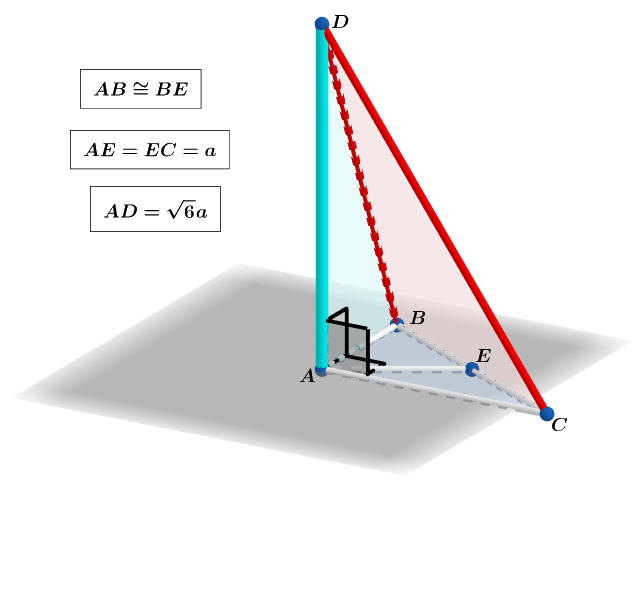It's All Tetrahedrons

In the irregular tetrahedron above, find the value of for which the surface area .
Express the answer to five decimal places.
The answer is 0.27096.
This section requires Javascript.
You are seeing this because something didn't load right. We suggest you, (a) try
refreshing the page, (b) enabling javascript if it is disabled on your browser and,
finally, (c)
loading the
non-javascript version of this page
. We're sorry about the hassle.
△ A E C is an isosceles triangle ⟹ E M is the perpendicular bisector of base A C ⟹ △ M E C is a right triangle and A M = M C .
Since ∠ A C B is a common angle to both right triangle A B C and M E C ⟹ △ A B C ∼ △ M E C ⟹ m 2 m = a x + a ⟹ x = a and the pythagorean theorem in △ A B C ⟹ y = 2 m = 3 a .
The surface area S = 2 a 2 ( 3 + 1 8 + 6 ) + A 4
For A 4 :
Using Heron's formula ⟹ A 4 = 4 a 2 ( 5 + 7 ) ( 5 − 7 ) ( 7 − 1 ) ( 7 + 1 ) = 4 a 2 1 8 ∗ 6 = 2 3 3 a 2
⟹ S = 2 a 2 ( 4 3 + 6 + 3 2 ) = 2 1 ⟹
a = 4 3 + 6 + 3 2 1 ≈ 0 . 2 7 0 9 6 .